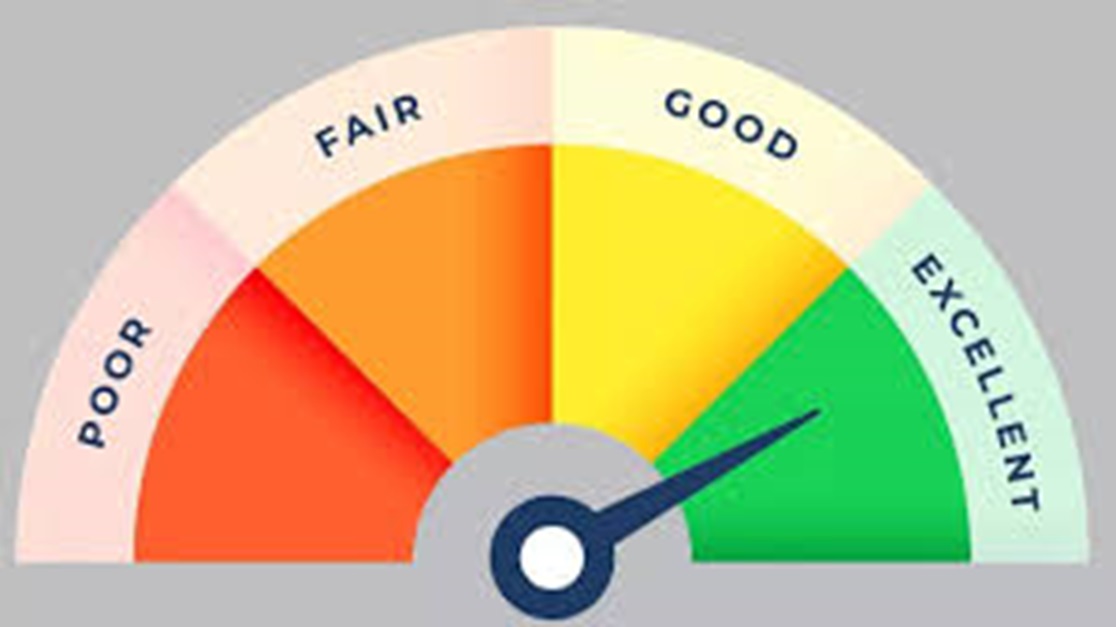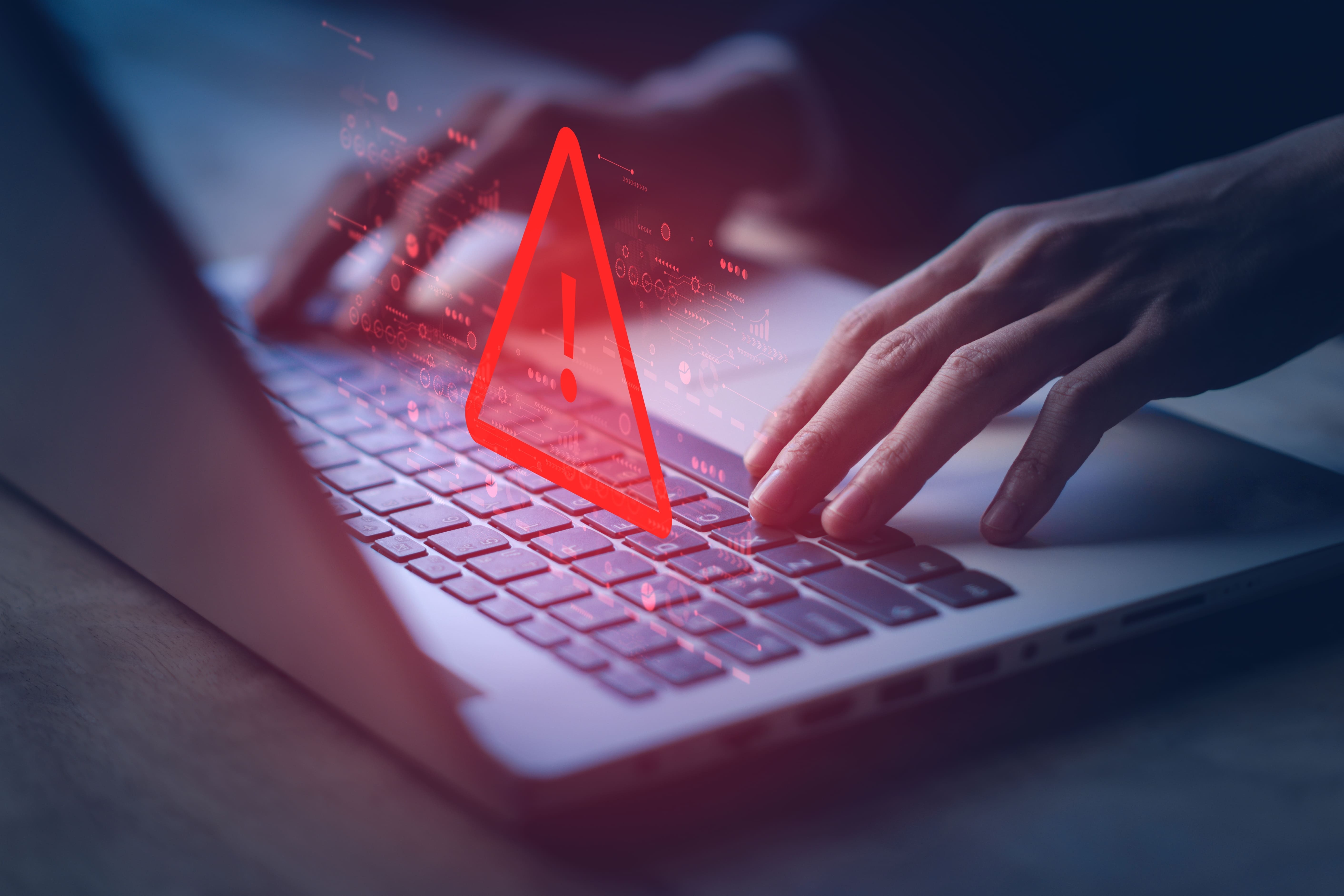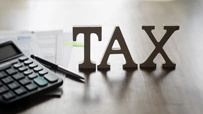How to Improve Your CIBIL Score from 600 to 750: A Step-by-Step Guide
July 10, 2025

What is a Good CIBIL Score?
The lowest CIBIL score is 300 and the highest CIBIL score is 900. A good CIBIL score typically falls in the range of 700 to 799, which increases your chances of getting loans and credit cards with favourable terms. A score above 750 is considered excellent, meaning you are a low-risk borrower in the eyes of banks. Having a good score allows you to access higher credit limits, lower interest rates, and quicker loan approvals. Ready to take your score above 750? Consider the tips below.
Why Do You Need to Have a Good CIBIL Score?
A good CIBIL score isn’t just a number—it’s your financial passport to better loan approvals, lower interest rates, and greater financial flexibility. Banks use this score to judge your creditworthiness, meaning a high score (750+) makes it easier to secure home loans, car loans, vehicle loans, or even a premium credit card without hassle. It also strengthens your negotiating power, helping you secure lower EMIs and better repayment terms.
A poor score, on the other hand, can lead to loan rejections or sky-high interest rates, limiting your financial options. Whether you’re planning to buy a home, start a business, or handle an emergency, a strong CIBIL score ensures you have access to affordable credit when you need it most. In short, your CIBIL score reflects your financial discipline—keep it high, and your financial future stays bright.
That said, if your CIBIL score is average, say 600 or 650, you may still get loans. Check out Ujjivan Small Finance Bank’s range of loan offerings. We offer Home Loans, MSME loans, Micro Loans, Agriculture Loans and more at competitive rates and flexible repayment tenures. Visit our website, select the product of your choice and apply today. Rest assured; you will enjoy a seamless loan journey. Now coming back to the point – let’s find out how to take your CIBIL score from 600 to 750.
Taking Your CIBIL Score from 600 to 750
Step 1: Check Your Credit Report for Errors
Before making improvements, check your CIBIL report for mistakes. Sometimes, incorrect entries like an unpaid loan (which you’ve already paid) or a wrong credit limit can drag your score down.
Example: Ramesh applied for a home loan but got rejected due to a low CIBIL score. On checking his report, he found an old unpaid credit card bill, which was actually a bank error. He raised a dispute, got it corrected, and his score increased by 40 points.
Action Plan: Get a free CIBIL report once a year and dispute errors immediately.
Step 2: Pay Your Bills on Time
Payment history makes up around 35% of your credit score. Late payments can bring it down significantly.
Example: Sneha used to pay her credit card bill after the due date. Once she started paying on time, her score improved by 50 points within six months.
Action Plan: Set auto-debits or reminders for EMI and credit card payments.
Step 3: Reduce Your Credit Utilization Ratio
Credit utilization refers to the percentage of your credit limit that you use. If you have a credit limit of ₹1,00,000 and you use ₹80,000, your utilization is 80%—which is too high.
Example: Amit’s CIBIL score was stuck at 650. He was using 75% of his credit limit every month. He reduced it to 30%, and within three months, his score jumped to 720.
Action Plan: Keep credit utilization below 30% to improve your score.
Step 4: Diversify Your Credit Mix
Having different types of credit—like a mix of personal loans, credit cards, and home loans—helps boost your score.
Example: Priya had only credit card history. She took a small personal loan and repaid it on time. Her credit mix improved, and her score moved from 610 to 740 in a year.
Action Plan: Maintain a mix of secured (home/auto loan) and unsecured credit (credit cards/personal loans).
Step 5: Avoid Multiple Loan Applications
Every time you apply for a loan, banks make a “hard inquiry,” which reduces your score slightly. Too many applications make you look credit-hungry.
Example: Rahul applied for three personal loans in a month, which dropped his score by 25 points. He waited for six months before reapplying, allowing his score to recover.
Action Plan: Space out your loan applications and apply only when necessary.
Step 6: Settle Outstanding Dues
If you have old unpaid loans, settle them to regain lost points.
Example: Kavita had an unpaid education loan from five years ago. Once she settled it, her score increased by 60 points.
Action Plan: Negotiate settlements for old debts and ensure they reflect as ‘Closed’ in your report.
How to Correct Your CIBIL Score?
Another reason for your CIBIL score being low could be because of a mistake reported in your credit/CIBIL report. For example, let's say you have closed a loan a couple of years ago. Due to a glitch, your report shows the loan account is still active and the dues are not settled yet. This can put a dent on your CIBIL score. Such instances are common, but the consequences are substantial.
Step-by-Step Process to Dispute and Correct a CIBIL Report Error
If you spot an inaccuracy in your CIBIL report, take prompt action. CIBIL (TransUnion CIBIL) provides a dispute resolution mechanism to correct errors. Here is a step-by-step guide:
1. Obtain and Review Your CIBIL Report
First, get the latest copy of your CIBIL credit report and go through it carefully. You’re entitled to one free full CIBIL report per year as mandated by RBI. (You can request it via the official CIBIL website or app.) Check every section for anomalies – personal details, account information, balances, status, and enquiry records. Identify and list the errors, noting the specifics (account numbers, dates, amounts, etc.). Common errors to look for include wrong personal data, accounts that aren’t yours, incorrect payment histories, or duplicate loan entries.
2. Raise a Dispute with CIBIL
Once errors are identified, log in to the CIBIL online dispute resolution platform (via your myCIBIL account on the CIBIL website) to file a dispute. CIBIL offers multiple channels – you can submit an online dispute form, or even raise issues through the myCIBIL mobile app, email, post, or in person at their office.
On the online portal, go to the “Dispute” or “Credit Report Dispute” section, select the relevant report entry, and clearly specify the error. Fill out the details required and submit the form. No fee is charged by CIBIL for filing a dispute – it’s a free service for consumers (as confirmed by CIBIL officials). After submission, CIBIL will generate a dispute ID or service request number which you can use to track the status.
3. Provide Supporting Documents
To strengthen your case, gather documents that prove the information is wrong. For personal detail mistakes, ID proofs (PAN, Aadhaar) can verify the correct info. For account errors, use bank statements, loan closure or no-dues certificates, payment receipts, or email confirmations that show the account status or payment history. While filing the dispute, you may have the option to upload such proofs or you can provide them to CIBIL via email. These documents help CIBIL and the lender validate your claim.
4. Notify the Lender (if Applicable)
In parallel, it’s wise to inform the concerned bank or financial institution about the error – especially if it’s about a specific loan or credit card. Write a formal complaint to the lender’s customer service or nodal officer describing the mistake and include evidence. For instance, if a loan you never took is showing up, alert the lender that reported it; if a closed account is still open, send the closure proof to that bank. While CIBIL will forward the dispute to the lender anyway, your direct notification prompts the bank to investigate on their end too. Ask the lender to update the correct data with CIBIL in their next report submission. This dual approach (dispute with CIBIL and complaint to lender) ensures the issue gets attention from both sides.
5. Wait for Investigation and Resolution
After you raise a dispute, CIBIL will not immediately change the data on its own – by law, credit bureaus must verify information with the reporting institution first. CIBIL will contact the bank/NBFC that furnished the data, convey your dispute, and seek confirmation or correction from them.
The lender will check their records. If the lender agrees the information was inaccurate, they will send corrected data or instructions to CIBIL to update the record. If the lender believes the data was accurate, the dispute might be rejected with a reason provided. During this process, be prepared to wait a few weeks. CIBIL’s standard turnaround time for resolving disputes is around 30 days, though it can extend to 45 days in some cases. In fact, most disputes tend to be resolved “much earlier” than the 30–45 day window, according to industry reports. Recent RBI guidelines mandate that issues must be resolved within 30 days, and delays beyond that can make the bureau and lender liable to pay compensation of ₹100 per day to the consumer. So, typically within a month of raising the dispute, you should have an outcome.
6. Follow Up and Check Updated Report
Keep an eye on the dispute status via the CIBIL portal using your dispute ID. CIBIL may email you updates or even an updated report when the correction is made. Once you get confirmation that the error has been fixed (or the dispute closed), download or request your latest CIBIL report to verify the changes.
CIBIL usually sends an updated credit report to the consumer once a dispute is resolved. Ensure that the erroneous entry is corrected or removed and that your personal details are now accurate. This updated report will also reflect any change in your credit score due to the correction. If the issue remains unresolved or the outcome is unsatisfactory (say, the dispute was rejected but you have strong proof), you may escalate the matter – for example, by contacting CIBIL’s Grievance Redressal or even the Banking Ombudsman or Consumer Protection Act avenues for recourse (more on this below).
7. Channels to Raise Disputes
As noted, online submission via the CIBIL website is the fastest and most recommended channel. However, CIBIL also allows offline methods if needed. You can send a written dispute letter or a filled dispute form to CIBIL’s mailing address, or email their support with your dispute details.
In-person visits to CIBIL’s offices are another option (though not commonly needed). Regardless of the channel, all disputes follow the same verification process with the lender. Online or email complaints tend to get quicker responses than physical mail.
Resolution Timeline and What to Expect
1. Standard Timeline
In general, expect about 30 days for CIBIL to investigate and resolve a dispute. This timeframe is in line with regulations that give credit bureaus 30 days (extendable to 45 days in some cases) to respond to consumer disputes. The countdown usually starts from the date the dispute is raised and acknowledged. In many cases, simple errors (like a minor personal detail correction) can be resolved in a couple of weeks, whereas complex issues (like fraud accounts or multiple errors) may take the full 30-45 days.
2. RBI’s New Mandate
As of late 2023, the RBI has taken steps to expedite corrections. It mandated that from January 2024 onwards, banks and other credit institutions must report data to bureaus more frequently (at least every 15 days instead of monthly). More frequent reporting means that once a correction is approved by the bank, it should reflect in the bureau’s records sooner (potentially within the next half-month cycle). Moreover, RBI’s guideline says that if a dispute/complaint isn’t resolved within 30 days, the lender and the credit bureau have to compensate the customer ₹100 per day of delay. This rule places pressure on both banks and CIBIL to fix errors promptly. As a result, one should reasonably expect resolution by around a month’s time in most cases, barring extraordinary complications.
3. Receiving the Updated Report
When the dispute is resolved and the data corrected, CIBIL will update the entry in your credit report and usually notify you. TransUnion CIBIL has stated that once a dispute is resolved with input from the credit institution, the bureau updates the information and sends an updated copy of the credit report to the consumer. You can also log in to your CIBIL account to download the latest report. The changes will appear under the respective sections (for example, an erroneous loan entry deleted, or a status changed from “settled” to “closed”). Check that your CIBIL score has adjusted if the error was affecting it.
4. Impact on Credit Score
Correcting errors can definitely affect your credit score – usually for the better. If the error was something negative (like a false default or an unauthorized hard enquiry), its removal can increase your CIBIL score back to where it should be. For instance, each hard enquiry slightly lowers your score; when an incorrect enquiry is removed, “your credit score gets restored to the same level as it was before the enquiry”, essentially reversing the damage.
Likewise, removing a wrongful default or late payment record can substantially boost your score because the derogatory mark is gone. Do note, if the corrected error was neutral (say an address mistake), your score may not change at all – because such data doesn’t influence the score calculation. In summary, fixing genuine mistakes in the report will never hurt your score; it can only help or have no effect. After correction, the timeline for the score to update is tied to the reporting cycle – usually the next update cycle. Thanks to RBI’s push for bi-monthly updates, credit score changes should reflect within a few weeks after the correction is made by the bureau. It’s prudent to monitor your score a month after the dispute is closed to see that it has stabilized.
Final Thoughts
Improving your CIBIL score isn’t an overnight process, but with consistent efforts, you can move from 600 to 750 in 6-12 months. Follow these steps, be patient, and watch your financial credibility grow!
Kick-start your financial journey with Ujjivan. Save more with our high-interest Savings Account and Deposit products. Need cash for your business or personal needs? Apply for MSME Loans or Micro Loans with us – we offer competitive rates and quick disbursal. We also offer vehicle loans and home loans tailored for your unique requirements. Experience a smooth banking journey with Ujjivan SFB!
Disclaimer:
The contents herein are only for informational purposes and generic in nature. The content does not amount to an offer, invitation or solicitation of any kind to buy or sell, and are not intended to create any legal rights or obligations. This information is subject to updation, completion, amendment and verification without notice. The contents herein are also subject to other product-specific terms and conditions, as well as any applicable third-party terms and conditions, for which Ujjivan Small Finance Bank assumes no responsibility or liability.
Nothing contained herein is intended to constitute financial, investment, legal, tax, or any other professional advice or opinion. Please obtain professional advice before making investment or any other decisions. Any investment decisions that may be made by the you shall be at your own sole discretion, independent analysis and evaluation of the risks involved. The use of any information set out in this document is entirely at the user’s own risk. Ujjivan Small Finance Bank Limited makes no representation or warranty, express or implied, as to the accuracy and completeness for any information herein. The Bank disclaims any and all liability for any loss or damage (direct, indirect, consequential, or otherwise) incurred by you due to use of or due to investment, product application decisions made by you on the basis of the contents herein. While the information is prepared in good faith from sources deemed reliable (including public sources), the Bank disclaims any liability with respect to accuracy of information or any error or omission or any loss or damage incurred by anyone in reliance on the contents herein, in any manner whatsoever.
To know more about Ujjivan Small Finance Bank Products Visit:"https://www.ujjivansfb.in"
All intellectual property rights, including copyrights, trademarks, and other proprietary rights, pertaining to the content and materials displayed herein, belong
to Ujjivan Small Finance Bank Limited or its licensors. Unauthorised use or misuse of any intellectual property, or other content displayed herein is strictly prohibited and the same is not intended for distribution to, or use by, any person in any jurisdiction where such distribution or use would (by reason of that person’s nationality, residence or otherwise) be contrary to law or registration or would subject Ujjivan Small Finance Bank Limited or its affiliates to any licensing or registration requirements.
FAQs
1. How long does it take to improve my CIBIL score from 600 to 750?
It typically takes 6 to 12 months, depending on your credit history and financial discipline. If you pay bills on time, reduce credit utilization, and maintain a healthy mix of credit, you can see improvements sooner.
2. Does checking my CIBIL score frequently lower it?
No, checking your own credit report is a soft inquiry and does not impact your score. However, when banks or banks check your report during a loan application, it counts as a hard inquiry and may lower your score.
3. What is the fastest way to increase my CIBIL score?
The quickest ways include clearing outstanding dues, making timely payments, and reducing your credit utilization below 30%. Disputing errors on your report can also lead to an immediate boost.
4. Can a low CIBIL score prevent me from getting a credit card?
Yes, banks may reject credit card applications for low scores. However, you can apply for a secured credit card (against an FD) and use it responsibly to rebuild your credit score.
5. How many points can I gain by paying my credit card bills on time?
Timely payments can increase your score by 50-100 points over six months, depending on your previous payment history and outstanding debts.
6. Will closing an old credit card improve my CIBIL score?
Not necessarily. Closing an old credit card can reduce your credit age and increase your credit utilization, which may lower your score. If it has a long history, it’s better to keep it active.
7. How does a loan settlement affect my CIBIL score?
If you settle a loan instead of paying it in full, it gets marked as ‘Settled’ in your report, which negatively impacts your score. Always try to repay in full to maintain a good credit history.
8. Does increasing my credit limit help improve my CIBIL score?
Yes, if you maintain the same spending pattern, increasing your credit limit can lower your credit utilization ratio, which positively impacts your score.
9. Can I get a home loan with a CIBIL score of 600?
It’s difficult but not impossible. Banks may approve loans at higher interest rates or ask for a co-applicant with a better score. It’s advisable to improve your score before applying.
10. Will taking a personal loan improve my CIBIL score?
Yes, if you repay it on time, it adds to your credit mix and builds a positive repayment history, boosting your score over time.
Latest Blogs

Dussehra 2025: How to Win Your Financial Battles with Smart Saving
Dussehra 2025 (also known as Vijayadashami) falls on Thursday, October 2, 2025.

eSIM Scam in India: I4C Warns Mobile Users About Rising Fraud – How to Stay Safe
The Indian Cybercrime Coordination Centre (I4C), a wing of the Ministry of Home Affairs, issued a strong warning to mobile users about the rapid increase in eSIM fraud in India.

How to Link PAN with Aadhaar: Step-by-Step Guide & Consequences of Not Linking
Linking your Permanent Account Number (PAN) with your Aadhaar is no longer just a best practice.

Annual Information Statement (AIS): A Complete Guide for Stress-Free ITR Filing
India’s tax season is in its final stretch.

ITR-1 (Sahaj) Restrictions: Income Sources Not Allowed & Filing Rules
With just a few days left before the 15 September 2025 deadline for filing Income Tax Returns (ITRs) for Assessment Year (AY) 2025-26, many taxpayers are rushing to submit their forms online.

